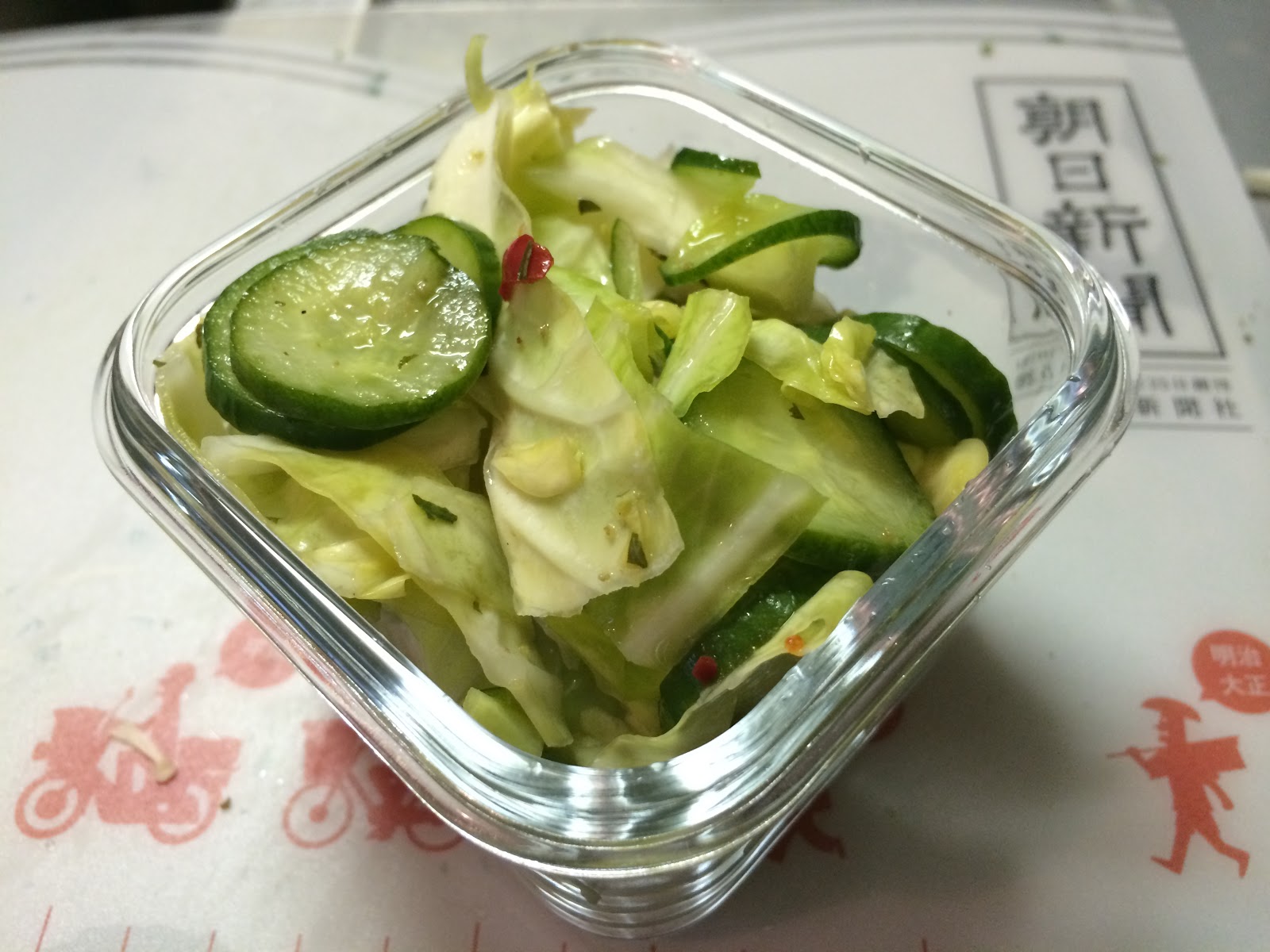in the first recipe below I have an interesting ingredient called Shio-koji. here is what the japanese wikipedia page has to say about it: "Shio-koji is a traditional Japanese seasoning made from koji [fermented rice] and salt mixed with water, through a process of aging and fermentation. It has been used since old times to pickle vegetables and fish, but since 2011 has also become popular in various other dishes."
Koji is an essential part of the production of miso paste. Shio-koji simply means "salt koji" and is easy to use in everyday foods.
This is a great ingredient for vegans because it can create a cheesy taste in foods. Due to the starch content from the rice, it also creates a bolder mouthfeel and a taste of umami.
Here's how to make fat free, 2-ingredient vegan cheese from shio-koji and tofu:
 |
| sliced tofu cheese over tomato pasta. (sorry, it doesn't melt!) |
- drain and press the tofu until much of the water is out.
- put out a sheet of plastic wrap and put a dollop of shio-koji on there, and place the tofu block on top.
- smother the rest of the tofu block in shio-koji and wrap well. place in an airtight container in the fridge, and don't touch for at least 3 days.
- it will be ready after 3 days. slice and enjoy! you can eat it with the shio-koji still on. if the shio-koji has a strong taste for you, wipe it off. the taste and texture is similar to a light, soft cheese. if you mash it, it is similar to ricotta.
Shio-koji may be hard to get outside Japan, but look around at Asian supermarkets like T&T or Fujiya if you're in Vancouver. it's cheap and plentiful here in japan so if you would like some please let me know and I will gladly send it to you, just so more people know about it!
creamy cheesey pasta with vegetables
main ingredients2-3 cups pasta
your choice of leafy greens (i used baby kale)
your choice of mushroom (i used enoki)
your choice of colourful vegetable, julienned (i used carrot)
sauce ingredients: mix well and set aside
½ tsp salt
2 tbsp grape seed oil
2 tbsp nutritional yeast or garlic* depending on what flavour you want (I used nutritional yeast this time)
1 tbsp Shio-koji
½ tsp dijon mustard (leave out if you're making garlic sauce)
3 - 4 tbsp soy cream or non-dairy milk
- boil pasta in unseasoned water until soft. add any hard vegetables halfway through.
- when the pasta is al dente, turn the heat down to low, drain most of the water (leave about half a cup pasta water to cook the other things), and add finely chopped greens and mushrooms.
- when the kale and mushrooms are cooked through, incorporate the sauce which you have mixed in advance. there should be some pasta water left, if not add more water or non-dairy milk so the pasta turns out creamy and not sticky.
- warm the pasta until the sauce is the consistency you like, garnish with parsley and basil, and serve immediately
*if you're going to make the garlic sauce, you might want to add some flour to the sauce. first mix the flour and oil before you add the other wet ingredients.
*piri-piri* pickled cabbage and cucumber salad
1 cucumber, sliced medium-thin
2 small red chilies, seeds removed and chopped finely
1½ - 2 tsp salt
a sprinkling of apple or rice vinegar
a sprinkling of Sansho ("japanese pepper")
a sprinkling of basil
as much dried parsley as you'd like
- basically just combine all ingredients and let sit for 2-3 days.
- the salt is an essential part of pickling and reducing the cabbage, but it's easily overdone so be careful. Sansho is also easy to overdo. if you put a ton of sansho on, I think it has a slightly unpleasant aftertaste. but the right amount really brings an interesting taste element to many dishes.
- when cutting the cabbage, take care with the ribs because they are harder to soften than the leafy bits. so take the time to slice them thinly lengthwise.


No comments:
Post a Comment